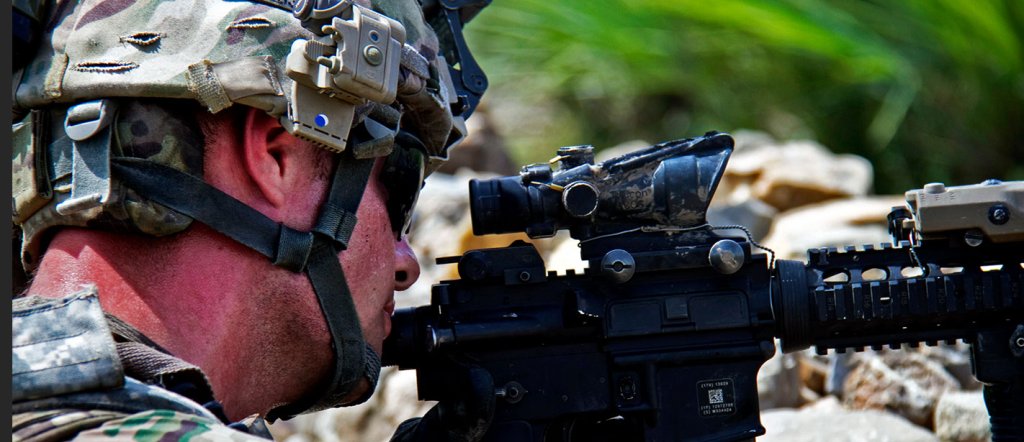

The Global War on Terror saw widespread adoption of rifle optics in the U.S. military. Electronic aiming solutions like EOTech’s Holographic Weapon Sights and Aimpoint’s red dot sights became commonplace across both special forces and conventional units. In contrast to these popular battery-powered sights, one optic stands out for its no-fail illumination methods: Trijicon’s Advanced Combat Optical Gunsight (ACOG).

Like a lot of military equipment, the ACOG was first adopted by special forces before it entered service with regular troops. In 1995, U.S. Special Operations Command selected the Trijicon TA01 4×32 ACOG as the official scope for their M4 carbines. It was the first official optical enhancement for the M4/M16 family of weapons in the U.S. military. This rugged prismatic scope features 4x magnification and a reticle illuminated by the radioactive decay of tritium.

Between 2004 and 2005, the Marine Corps adopted an updated version of the ACOG as its official Rifle Combat Optic. Designated the TA31RCO, it augmented the tritium illumination with a fiber-optic pipe that gathers ambient light for daytime illumination. From 1987 to 2005, Trijicon produced and sold 100,000 ACOGs. With their Marine Corps contract, it took just 18 months to manufacture the next 100,000.

The ACOG quickly proved itself in Iraq and Afghanistan and developed a reputation as a rugged and reliable optic. Its magnification and bullet drop compensator reticle aided in engagements at range. In 2007, the Army adopted the TA31RCO as a field carry optic. The next year, military use of the ACOG expanded further with the adoption of the Trijicon TA648 6×48 ACOG, designated the SU-260/P Machine Gun Day Optic.
While the ACOG’s dual-illumination method gives it a military-preferred redundancy, the fiber-optic illumination has a tendency to be too bright in sunny environments. As a result, troops adopted a standard practice of taping over the fiber-optic pipe and exposing just enough of it to illuminate the reticle to their preferred brightness. The short eye relief of the ACOG was also a complaint by troops who had to adopt the nose-to-charging-handle position to shoot. However, this was due in part to the ACOG’s mounting position on the rifle being moved forward by the mandated rear flip-up sight.

Although the ACOG has proven itself through hard use during the Global War on Terror, the decades-old design is being replaced by new low-power variable optics. In 2020, the Marine Corps selected the Trijicon Variable Combat Optical Gunsight 1-6x scope as its Squad Common Optic and the Army adopted the Sig Sauer Tango6T 1-6x scope as the Direct View Optic. Still, the ACOG remains a popular scope in both professional and civilian markets with over 1,000,000 produced.
Read more on WATM:
The best military history books of 2022
Ukraine is getting these 3 armored fighting vehicles from the US, France and Germany
